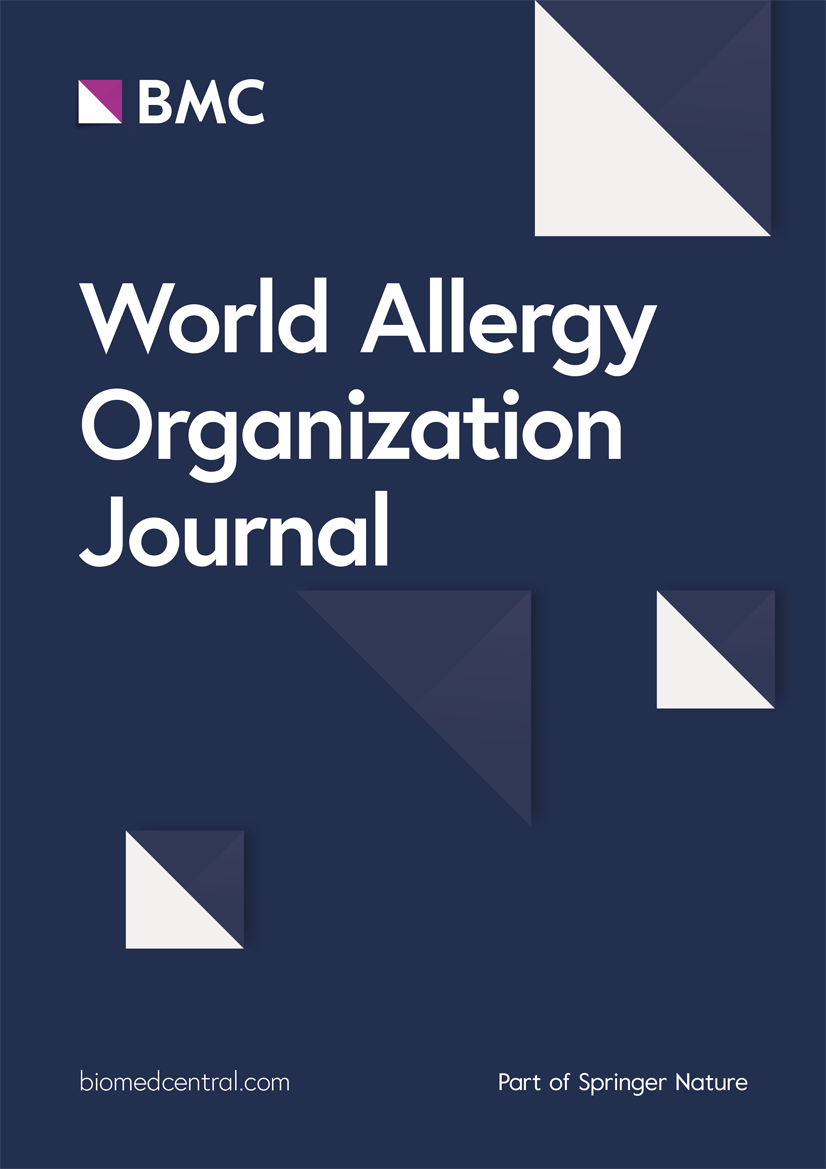变应性疾病与支气管扩张之间的关联介质:双向单变量和多变量孟德尔随机化研究和中介分析
IF 4.3
2区 医学
Q2 ALLERGY
引用次数: 0
摘要
背景:越来越多的研究表明,支气管扩张经常与一系列过敏性疾病共存。这两种疾病的发病机制都非常复杂,涉及多种相互关联的因素,如免疫反应、代谢途径和肠道微生物群。然而,确切的因果关系之间的支气管扩张和过敏相关的条件仍然知之甚少。材料和方法我们获得了5种变态反应性疾病(过敏性哮喘、过敏性鼻炎、特应性结膜炎、特应性皮炎和慢性鼻窦炎)和支气管扩张的已发表的GWAS数据集,以及731个免疫细胞、91个炎症蛋白、1400个血浆代谢物和473个肠道微生物群的数据。使用双向双样本孟德尔随机化(TSMR),我们探索了过敏性疾病和支气管扩张之间的因果关系,并在一个复制队列中验证了这些发现。我们还应用连锁不平衡评分回归(LDSC)来评估条件之间的遗传相关性。此外,通过两步TSMR和多变量MR分析,评估免疫细胞、炎症蛋白、代谢物和肠道微生物群对过敏性疾病和支气管扩张之间关系的介导作用。结果过敏性哮喘、变应性鼻炎、特应性结膜炎和特应性皮炎均可增加支气管扩张的发生风险,但未发现相反方向的因果关系。此外,在变应性哮喘、变应性鼻炎、特应性皮炎和支气管扩张之间分别观察到正的遗传关联。我们确定了总共40种免疫细胞、5种炎症蛋白、90种血浆代谢物和19种肠道微生物群是导致支气管扩张发病的原因。在中介分析中,我们发现视黄醇(维生素A)与油酰亚油酰甘油的代谢比率(18:1 ~ 18:2)是过敏性哮喘发展为支气管扩张的危险因素,而CD33dim HLA-DR + CD11b +细胞上CD14的水平是变应性鼻炎的危险因素。两种特定的代谢比率——天冬氨酸与n -乙酰氨基葡萄糖与n -乙酰半乳糖胺的比率和蛋氨酸与磷酸盐的比率——分别是特应性皮炎发展为支气管扩张的危险因素和保护因素。结论变应性哮喘、变应性鼻炎、特应性结膜炎和特应性皮炎会增加支气管扩张的风险,但没有证据表明两者之间存在反向因果关系。具体而言,3种代谢比率被确定为变应性疾病和支气管扩张之间的介质。需要进一步的研究来阐明潜在的机制。本文章由计算机程序翻译,如有差异,请以英文原文为准。
Mediators of the association between allergic diseases and bronchiectasis: A bi-directional univariable and multivariable Mendelian randomization study and mediation analysis
Background
Emerging research indicates that bronchiectasis often coexists with a range of allergic illnesses. The pathogenesis of both conditions is highly complex, involving a variety of interconnected factors, such as immune responses, metabolic pathways, and gut microbiota. However, the precise causal relationship between bronchiectasis and allergy-related conditions remains poorly understood.
Materials and methods
We obtained published GWAS datasets for 5 allergic disorders (allergic asthma, allergic rhinitis, atopic conjunctivitis, atopic dermatitis, and chronic rhinosinusitis) and bronchiectasis, along with data on 731 immune cells, 91 inflammatory proteins, 1400 plasma metabolites, and 473 gut microbiotas. Using bi-directional two-sample Mendelian Randomization (TSMR), we explored causal relationships between allergic diseases and bronchiectasis and validated these findings in a replication cohort. We also applied Linkage Disequilibrium Score Regression (LDSC) to assess genetic correlations between the conditions. Additionally, the mediating effects of immune cells, inflammatory proteins, metabolites, and gut microbiota on the relationship between allergic disorders and bronchiectasis were assessed through two-step TSMR and multivariate MR analysis.
Results
Our study revealed that allergic asthma, allergic rhinitis, atopic conjunctivitis, and atopic dermatitis all increased the risk of developing bronchiectasis, with no causal relationship identified in the reverse direction. Additionally, positive genetic associations were observed between allergic asthma, allergic rhinitis, atopic dermatitis, and bronchiectasis, respectively. We identified a total of forty immune cells, 5 inflammatory proteins, ninety plasma metabolites, and nineteen gut microbiota species as causal factors contributing to bronchiectasis onset. In mediation analysis, we found that the metabolic ratio of Retinol (Vitamin A) to oleoyl-linoleoyl-glycerol (18:1 to 18:2) was a risk factor for allergic asthma developing bronchiectasis, while the level of CD14 on CD33dim HLA-DR + CD11b + cells was a risk factor for allergic rhinitis. Two specific metabolic ratios—the Aspartate to N-acetylglucosamine to N-acetylgalactosamine ratio and the Methionine to phosphate ratio—served as, respectively, risk and protective factors for atopic dermatitis-developing bronchiectasis.
Conclusion
Our findings suggest that allergic asthma, allergic rhinitis, atopic conjunctivitis, and atopic dermatitis increase the risk of developing bronchiectasis, with no evidence of a reverse causal relationship. Specifically, 3 metabolic ratios were identified as mediators between allergic diseases and bronchiectasis. Further studies are needed to clarify the underlying mechanisms.
求助全文
通过发布文献求助,成功后即可免费获取论文全文。
去求助
来源期刊

World Allergy Organization Journal
Immunology and Microbiology-Immunology
CiteScore
9.10
自引率
5.90%
发文量
91
审稿时长
9 weeks
期刊介绍:
The official pubication of the World Allergy Organization, the World Allergy Organization Journal (WAOjournal) publishes original mechanistic, translational, and clinical research on the topics of allergy, asthma, anaphylaxis, and clincial immunology, as well as reviews, guidelines, and position papers that contribute to the improvement of patient care. WAOjournal publishes research on the growth of allergy prevalence within the scope of single countries, country comparisons, and practical global issues and regulations, or threats to the allergy specialty. The Journal invites the submissions of all authors interested in publishing on current global problems in allergy, asthma, anaphylaxis, and immunology. Of particular interest are the immunological consequences of climate change and the subsequent systematic transformations in food habits and their consequences for the allergy/immunology discipline.
 求助内容:
求助内容: 应助结果提醒方式:
应助结果提醒方式:


